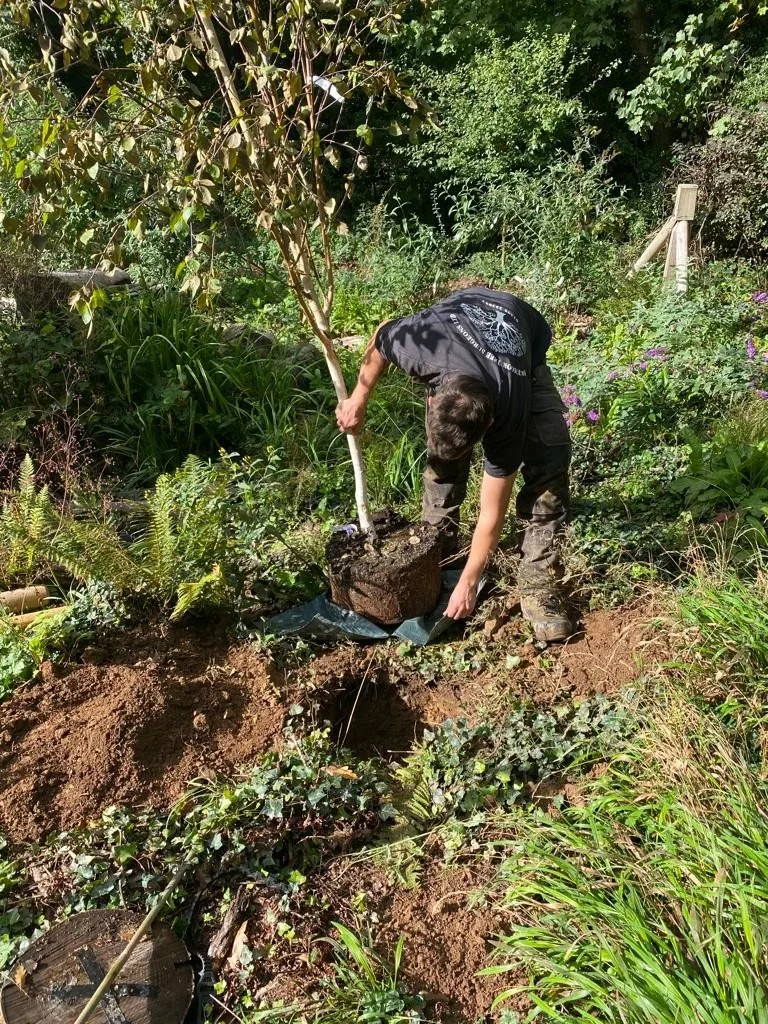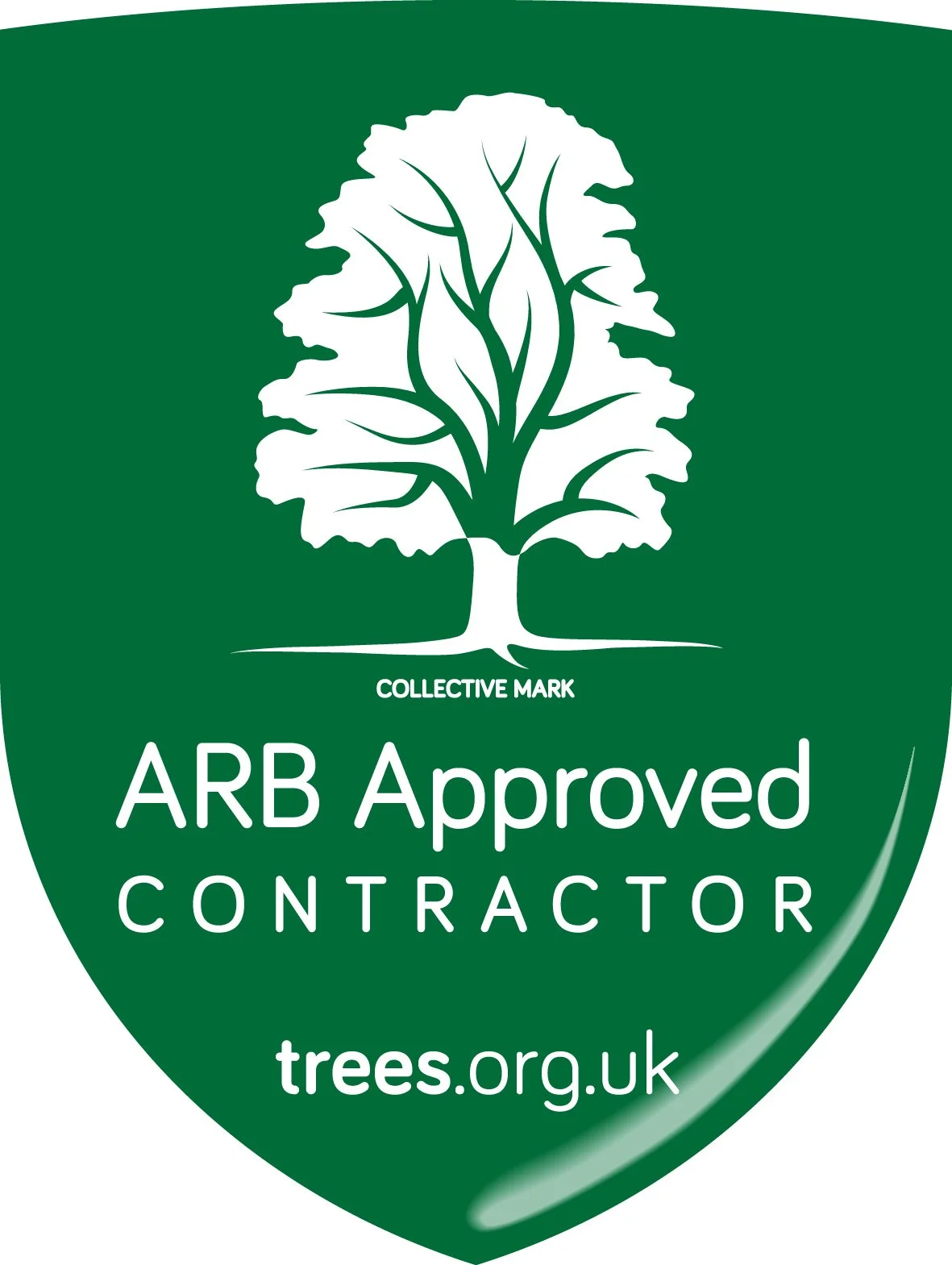October to April is the perfect time of year to plant new trees in your garden! The cooler, wetter weather makes caring for the new trees much easier, and not being in flower or leaf means that the trees have more energy to spare for the process of being moved and planted. Our Quick Guide to Tree Planting gives you a brief overview of the tree planting process, so if you have some planting plans in mind read on to learn more!
A containerised tree about to planted in prepared ground.
Trees ready for planting are usually between 1-2 years old and should have been hardened off outside, meaning that they are accustomed to colder temperatures and should be able to survive and thrive out of doors. They are provided in either bare-root or containerised form and can be easily transported and planted. New trees are planted in prepared ground and then watered well. Support or protection is usually provided to the tree at this stage, and then the young tree can begin to bed in.
When deciding what to plant and where, there are a number of factors to consider, such as:
What is the purpose of the tree? Is it ornamental? Are you looking to get more shade or greater privacy in your garden? Would you like to attract wildlife, or grow food for yourself?
How tall would you like it to get?
Would you like a tree with berries to try and encourage wildlife into your garden, or would you like to avoid the mess of dropped and squashed berries?
How would you like the tree to look through the seasons? Are you happy to deal with leaves being shed?
Would you like a tree with blossom, or would you rather avoid this and go for something with the least pollen possible?
What native species appeal to you? Are there any particular species which are important in your area or particularly distinctive in the local landscape?
A number of useful guides exist to help you decide what tree you would like to plant, a selection of which are linked at the bottom of this article. Dartmoor Tree Surgeons can also provide expert advice and assistance with selecting and planting the perfect tree for your space.
A planted and supported Copper Beech. As the tree grows the support can be adjusted and eventually removed.
Once you’ve decided what you would like to plant and have sourced a tree for your garden the aftercare begins! Freshly planted young trees are trees at their most vulnerable. Although they are mature enough to be able to be planted out of doors, they still require care and attention, and will continue to do so for the first few years of their lives. You can give your tree the best support as it grows into its new home by:
Providing plenty of water. This is the most important thing to remember when caring for new trees as they won’t yet have a well established root system, meaning that they can struggle to find their own water supplies during drier months. Trees should be watered for the first 3 years after planting.
Literally provide support with stakes and ties. As the tree grows these may become restrictive, so it is important to check in and make sure any support is still working as it should. This is especially true of any ties, which can become embedded in the tree as it grows if not removed in time.
If you are planting trees in areas frequented by animals like sheep or deer, provide the trees with cages to prevent their bark from being stripped off. As they age they are better able to withstand a bit of grazing, but when still not fully mature this can kill a tree very quickly.
Cover the area round the tree base with bark mulch or similar to help protect the tree from strimmer of lawnmower damage and to prevent it being choked with weeds. Remember to keep the mulch topped up as it will eventually biodegrade.
As the tree grows larger consider undertaking some low-key pruning works using hand tools rather than chainsaws. Removing crossed or competing branches can help the tree canopy to form evenly.
Useful guides and information:
Tree Species Guide by the Tree Design & Action Group - This very large guide is full of information for a huge variety of trees but does take some going through. A useful appendix is included at the end breaking down trees by their size, blossom, light preference and other factors. Best viewed on the computer and not your phone!
Tree Planting Guide from The Tree Council - A useful and considered guide to all aspects of tree planting.
Guide to Tree & Shrub Planting from the RHS - A brief guide with links to further information, and of course the RHS’s species guide (best used if you have a few species in mind and would like some more information on them).
Guides on which species to plant, how to plant them and how to provide aftercare from The Woodland Trust - The Woodland Trust is a great source of information on tree planting, as they have several campaigns encouraging domestic and widespread planting and even have a shop for young trees.
The Arboricultural Association has produced a quick guide and a long guide to tree planting and caring for new trees.
And, finally, if you would like some face to face advice or any support with selecting, sourcing or planting a tree, Dartmoor Tree Surgeons can help you through every stage of the planting process, and can even provide regular aftercare to your tree once it has been established! Get in touch with us now for a no-obligation quote and some expert advice!




